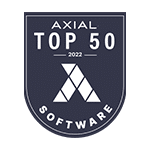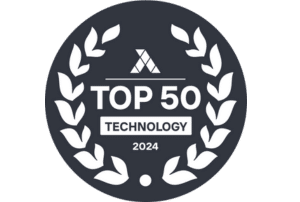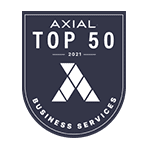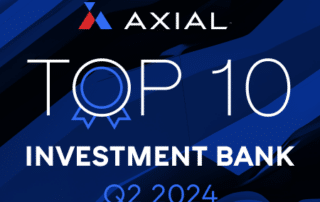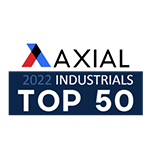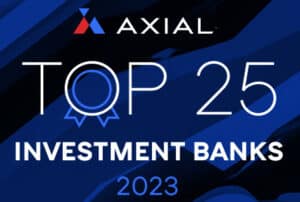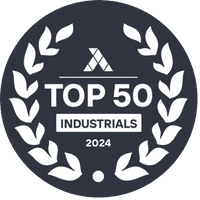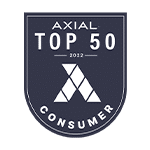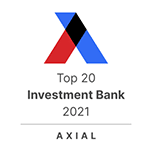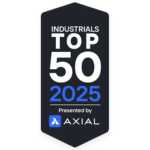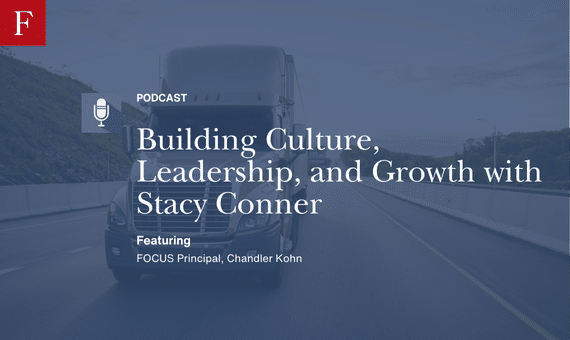
Building Culture, Leadership, and Growth with Stacy Conner
Stacy Conner: OK. First of all, thank you for having us. The company is completely a team that works together to make things happen. So really appreciate that recognition that the team is getting. As we as we work. Through some things and that’s the same behind that award. It’s it’s the team that’s pulling together. So you wanted to hear about the? What we’re trying to do to grow. And the different things that that we’re putting in place, what we really want to grow first is our team. We want to grow. Their skills, their capability, their. Seasoning and maturity and their ability to make decisions and. That that’s every level of every area of the. Company, but especially my leadership team and we, one of the experiences we even had just this morning is being a leader doesn’t mean that you’re always liked. It doesn’t mean that you always. Choose. The right the thing that’s going to make everybody like you, you choose the thing that’s the hard decision that other people are choosing not to take responsibility for. And when you do that decision, you get something better than being liked, and that’s being respected. And that’s what our team has had to make some very difficult decisions over the last couple of weeks. And I wanted them to recognize that while sometimes these decisions are really hard to make and they’re difficult. The respect that you build. For doing the right thing for. Everybody is. Much better than being liked. By everybody. We all want to be liked, we all want to, you know, be one of the buddies and stuff. But sometimes being in those leadership roles means that you make the decision that nobody else wants to make.
Chandler Kohn: Yeah, definitely, definitely. That’s helpful. Take us a step back, you know, for folks that maybe don’t live in the area like myself in South Carolina. Tell us a little bit about equipment experts. I believe your husband started it now he’s fully retired. You took over the business in 2021. Think he started as a, you know, one man show. Tell us a little bit about then to now and where you are.
Stacy Conner: You know, that was such a journey and we started relatively late as entrepreneurs, we were. Close to we were 30. 8 almost. 40 both of us. When this whole thing happened and he had been a a mechanic since the time he. Was 16, he had. Lived on his own, bought a house as a senior in high school and worked full time during during that time frame. So he’s always been a hard worker, very motivated and and a driven personality and we had built a family together. We were. Having our third child and I was in the middle of a, you know, AC section like. Literally. That day having AC section when somebody dropped some concrete on his foot and so his foot was broken and he had to. Sit for two weeks for the. Swelling to go down before. The surgery. Half the surgery. And then, you know, heal up and then the. Day six weeks later. When he went back to work the day he went back the the you know it union labor, you know, for mechanics is almost like it’s almost like temp labor. And so they let him go that. Day. So we had to. Figure out what we’re going to do with our family, everything that was going on and. So we decided to go. Out on he went decided to go out on his own and he. Worked super hard. He worked 16 hours a day three years in a row. You know, pretty much. Three years solidly except. Being home for family events, birthdays and things like that, he was pretty much working. So it was, it was really hard and we didn’t know anything. Neither one of us had ever, ever managed people. Maybe one or two people, but certainly not a team and certainly not in the environments that we have now. So we had to learn. One what was a business, what’s a financial, which we never how to file, how to collect, you know, how to set up accounts. Receivable all of that which. Neither one of us knew. How to do so? It truly was, we figured. It out as we went along.
Chandler Kohn: That’s excellent. How many folks do you have working for you now?
Stacy Conner: 35.
Chandler Kohn: Wow. OK. That’s a little bit more than I thought. So is that 35? I think I saw you have 15 mobile service mechanics.
Stacy Conner: That’s about right. For the mobile, we have about 20 techs, about 30% are shop based and the rest are in the field. We do have a couple of flex ones but. We also have. You know, admin front office. Parts people. Sales people. All of that to. Keep to keep all. Of them you know. Fed with work SO. So yeah, we have quite a team.
Chandler Kohn: So you have some pretty good middle management between you and and the laborers and and the sales folks.
Stacy Conner: Yes, my, well, my daughter started working here when she was about 16 and she’s essentially been virtually in every position other than sales and marketing. So she’s been, she did data entry, did she did front office? She did parts she did. Office manager and now she’s the general manager and so she runs the operational element and all the mechanics and honestly the very first mechanic that she ever hired is named Joe about 7-8 years ago. They’re now married and working. They’re going to have a new. Baby in about two weeks.
Chandler Kohn: Wow, that’s great. Well, kudos to them. That’s, that’s very exciting. You know, getting middle management, you know, I can just imagine it if I started a business is challenging. And I also see it, you know, for my clients and folks that I talked with, you know, establishing middle management where you kind of step out of the day today is very tough one because you’re kind of your financials take a hit, you have to pay them. Maybe you’re not quite at the revenue level where you can support them. Tell us a little bit about how you manage that process to find and get good middle management and get to that level where you can kind of take a step back and guide it at a strategic level.
Stacy Conner: You know, it’s very interesting that you bring that up because. That’s a. That’s a. Thing that never ends. It’s about the. People, it’s about the. People that you have around you and we didn’t, you know, like I said, we hadn’t managed people at all, so we didn’t understand the intricacies and the different kinds of people that can work for you. You can. I mean you can. Get people there that just. Want to do the? Job for 8 hours. You can get. People there that really. Want to, you know, progress and learn and move and be a part of something and then you get some people in that you know can be covertly. Hostile. That will show you. One face and then. Show the people that work. For them a completely different face and and you will not have that transparency and we’ve all. Experienced it at different workplaces. And I think that’s the most dangerous thing that can happen to a business. But also going into a business, it’s the thing that you’re not looking out for. ‘Cause it’s a very, very subtle you’re looking out for sales you’re looking out for. Customers and you’re looking out for different employees and that everybody’s happy. Well, if you’re not getting that transparency passed through to you, then you are. You’re managing with false information and false. Data. You have to be able to figure out a way to figure out who those people are. And and and establish a. Culture where that doesn’t. That that kind of behavior doesn’t thrive, and when you get there, it’s a completely different animal in a different. Place where you can trust the people that are there. And you step back. But if you step back. Too early, then you end up being in a. Place where? You can damage your company. Your employees What’s? Going on and you end up having to rebuild. From scratch. And I’ve been there. I mean, it’s happened two or three times to us, but we’ve gotten better and better to figure out what’s going on and now our culture just doesn’t sustain that any of that kind of behavior.
Chandler Kohn: That’s excellent. We’ll get into culture here and some KPIs in a minute. Taking a step back to COVID 2020, your husband retires in 2021. Lot going on between those years. Obviously, it came with his challenges for you, if I had to guess, talk about, you know, where the business was, let’s say 2019. I know you had some lofty growth ambitions.
Stacy Conner: Yeah, we had huge. Growth ambitions. We wanted, sorry, I didn’t mean to. We really wanted to grow. We wanted to put several locations out. We wanted to do a few different things. And then 2020 hit and we were growing at that point, just normally how a normal person would run a business knowing what we knew. We knew that there was a lot. We didn’t know, but we just didn’t realize how much we didn’t know at that time. Then 20/20/20 came along and honestly at that time I also opened a diesel school in March of 2020. To help build techs that. Was kind of our major concern in 2019 and. Stuff as we built techs. But I opened a diesel school where we were training. People that worked really hard. To be technicians to funnel them into the field. Turns out 2020 is not a good time to open a school. But it it went really well for that. First year, so that was. One of the things that we were doing but. Also what we were concerned. With is, you know, the financial impact, nobody knew how long we would stay shut down. We didn’t know, you know, a money would go quickly if you weren’t making any money and you still had. To pay all your regular. Bills and subscriptions and all of those things that were going on, didn’t know if people were going to be taking sick leave or vacation and having to pay that out and not having the income coming in. So we worked. Really hard to find solutions and we we luckily found an A really good one which was here in our state there’s a thing called. Work source. Which means that you can. Lay people off. When business is slow and they get the difference on unemployment, so let’s say you could only use them for 20 hours, they would get 50% of the unemployment that they would get and. Also be able to keep. All of their benefits until you were able to bring them back on full time. So what happened during that time? We put every. Person in our company on that in that process, including myself and Greg, ’cause we didn’t and know what was going on and this happened a. Few weeks prior to COVID, so. When, you know, we’d actually never shut down during the whole time there was a core of. Us that were here taking care of. People and customers and things going on. So we kept open we kept you know working and and building business during that time frame. But when it was slow or when as. We were figuring out those. First couple of months. We could lay people off. They got unemployment. Kept their sick leave. Kept. All of their benefits and in addition, during COVID, they. Did that extra 600. Dollar payment and that they got even if they only had $1.00 so they could work almost. 38 hours. Get paid for 25. Dollars. Get the extra $600. Our team, we didn’t, we didn’t, we had no one quit during that particular few, you know, time period during when that COVID. Was really harsh and we got we’re able to take care. Of everyone.
Chandler Kohn: That’s excellent. Going back to the diesel school, did you guys write the curriculum? Did you outsource it? How did you think about that?
Stacy Conner: So I was in partnership with a company that. Had the. Curriculum and had the financing and so we provide the location, the instructor and the tooling and the trucks. So I rented a place next door at 1 Bay Shop and again it was during. COVID we had a classroom. And then we were going to have a Bay that we would work in. Well, what we ended up doing, which again was for the best, you can find opportunities in every situation. We moved our classroom into the. Bay so everybody would have their own. Table enough space, but when you’re teaching somebody something, having that engine on the table in front of you while you’re learning the. Theory so you can touch it, turn it over, or play with it while you’re. Learning it is actually incredibly helpful, so having that truck in the middle of the classroom with ATV on the wall as we were doing our instructing was incredibly helpful. Because they get up and. Go over and look at the truck and follow along with the lesson and and figure things out. So you had a nice combination of theory and practical that overlapped, and most mechanics are not necessarily. They don’t. Love theory. They don’t like sitting down and reading a book. They like working with their hands and they’re very motion intelligent, space intelligent, and when they can put their hands on it and learn the theory at the same time, it really locks in.
Chandler Kohn: Yeah, excellent. How many employees did you have in in 2019 ish before?
Stacy Conner: Maybe, maybe 20. 4 roughly I I’d. Have to go back and look but I’m I’m guessing at 24 OK.
Chandler Kohn: So you have 35 now you grow maybe you know 11 or so the business has started in 2004. What do you think is big? It has been the biggest growth inflection point from starting until now. Or maybe one decision that you made that you know you wish you would have made earlier.
Stacy Conner: Well for for me it was understanding words that people had banding about for a long time and not really understanding. What truly. Implementing them meant and those are things like values and culture and all of that. Because. For us, once we understood what it truly meant. It was a. Complete shift in our company which is a led to the best. Places to work. Type of things and and it’s. All because of that. And we, we got a mentor at that time in 20. We signed up in 2019. We started working with them in 2020. And so they helped and gave us good guidance. Through a lot of. Things and I still communicate with them to this day. But but I mean, and again, people say it all the time, being around people that are doing what you wanted to do and having them teach. You that because we were. Craving that information, but at our level, we couldn’t. We couldn’t find it, so we had to go find it elsewhere. And once we found it, it kind of opened up a lot.
Chandler Kohn: Yeah. So did they help you get into mobile as well and how did you think about that?
Stacy Conner: No, actually my husband was a mobile mechanic his entire life. He actually never really worked in a shop. And so when he went out, he was in a truck. We he didn’t have a shop for the first few years. And so our mindset as we’ve built the company has been mobily focused on how. To do it right versus. Being a shop and bolting. Bolting on mobile. Mobile’s much more complex than than running a shop. A shop is. Is rough, but. Bolting on mobile to that when you try to do. It like a shop it. It just there’s too much complexity to it. You have to, really. Understand the nuances of mobile and then build the shop on it.
Chandler Kohn: Yeah. You know, obviously there’s risk associated with mobile, there’s headache associated with it. You know, if I had to guess it’s, you know, it’s obviously a big portion of your revenue. Do you plan to grow that unit faster than you know in in shop or how do you think about that slower at the same time?
Stacy Conner: It it, to be honest, it it’s where the opportunity presents. I don’t want to have a preconceived notion that I’m going to put in 10 more mobile mechanics. Or we’ll build a shop. Up in, you know, 30 miles away, it’s more just the opportunity of a shop happen then we can build. That or do I have or really good techs that? Walk in the door and we have to go build the business locally. So it’s kind of back and forth on that where the opportunity is because the technicians are the especially the mobile technicians are they’re a different breed they. Have to have a higher. Skill set than a shop technician or not a higher but a different skill. Set. Set. Than a than a shop technician would have so. You have to get exactly the right. People in the right seat for them to be successful and everybody. Else to be able to. To support them.
Chandler Kohn: Yeah. So you’re doing a OR you offer a 16 week training program to new employees? Yep. You know, how much of that is you molding the employee versus just finding a good employee?
Stacy Conner: Well. Most good employees are going to want that leadership training because it’s not just leadership training for the company. And again, this is based on what our consultants. Taught us, which is very good. It’s. Me leadership. Learning to lead yourself to do the things that you don’t really want to do and getting the skill set that you need to do the things that you do want to do and then. We Leadership. When you’re doing me. Leadership, You have to be respectable. You have. To make the good decisions, you can’t take the. Easy way out which is. Like at the beginning of our conversation. You got to do the tough stuff. You’ve got to be. Respectable and then you have. People who look up to you, you’ve. Got to me lead. You’ve got to do the. Right thing. You’ve got to. Choose to do the right. Thing no matter what and then. It goes to we leadership. Then you start training in that that team. So for example, I focus on the people who are performing. Very well. And I want to pour what I can give people into them because they’re going to absorb, absorb it, they’re going to take it and then they’re going to use it and they’re going to amplify. But if you take that same amount of time to somebody who really doesn’t want to be. There or is. Just wants to. Fly under the radar or. Really doesn’t want to grow themselves. You’re pouring a lot of time and energy into someone that that isn’t going to use the time and energy that. You that you have. So you, for me, what I want to focus on are the people. That are really the top level people. And then they in turn work with their teams and they end up doing the same kind of thing. So you’re growing your best people, you’re not ignoring them, which can happen, which we did. We absolutely did we. Focused on the people who were the poor performers, putting all our time and energy into that. And the top performers sometimes get ignored. And you don’t want to do that, you want to give them. All of your focused attention.
Chandler Kohn: Yeah. I mean, you want to, you want to focus on, you know, the best way to keep your customers happy, happy and and quite frankly make as much money as possible. At the same time, as far as, you know, the the business consultant goes, explain them to the listener. You know what this business consultant did for you, what areas of the business that they understood and knew, you know operations, finance, sales channels, etcetera.
Stacy Conner: We actually did two different. Consultants and one was way back in the beginning in like 2010 and that’s when we didn’t know how to run a business, we didn’t know how to run a shop. And we found a consultant at that point. That helped us grow 5. Times we went from I at the time Greg and I were like, I don’t know, half $1,000,000 and then we went to a few $1,000,000 at that point. But that was. When like what you were talking about earlier? The ability to. Make the decision and. Take the risk to hire. Someone. Else like a service advisor, your very first service advisor, your very first parts person. Because there’s so much complexity into that it’s letting. Go of. Talking to the customers all the time and having that relationship. What if they say the wrong thing? What if they sell the wrong thing? What if they promised something wrong parts? What if they don’t know how to do? Parts like I do. And you have. To get over. That in your head? To start. Building that and once you do 123 employees and you. Get that figured out but. Again, if you’ve never managed people, you know, which a lot of times mechanics have not. If you’ve never managed a ton of people, you’re learning that from scratch and it’s. It’s like a dual dose you’re. Trying to figure out how to run a business and you’re trying to run people. So we worked with that group for quite a bit of. Time and but we got. To a point where OK, we. Learned all of this and now we want the next level. And that wasn’t there. And that’s one of the points I wanted to make for your listeners, is there’s a we all kind of get. Loyal. You know, we want to stay with this consultant or that consultant or we trust them or like them. But the answer with consultants is as long as you’re getting an increase in revenue or an increase in something, stay with them. But the minute that stops, that’s when you, you for your own good, need to jet. And I’ve made this mistake a couple of times to stay longer than I should have for my company because I like them or. I had created a relationship. But at the end of the. Day if the. If the numbers aren’t changing or the KPI somewhere are not improving, then it’s time to move on the second Consulting Group. That we worked with. Was in 2019 we signed up with them and in 2020 and they taught us. The. Level, they weren’t much into shops. But they were into business and so they taught us. All of that like information that much, much, you know, hundreds of $1,000,000 companies. They do, they have access. To they have the information on and. Taught us about all of. That so that. We could see the intricacies of the. Business and the culture and how to hire you know, if we’ve only hired 25 people and these people have hired 2000 people, they’re going to have a much better system on how to. Hire. Train and keep those people, and that’s what we absorbed.
Chandler Kohn: Yeah, excellent. Let’s let’s dive into to culture a bit and retaining and growing your talent. Obviously it’s a very critical piece of your business for you, you know, you know, growing and retaining that talent is tough. Let’s you know, let’s talk about that a little bit and how you grew that.
Stacy Conner: Well, the idea behind the. School was that we’d. Put a bunch of mechanics through and then we’d hire them to be honest. There was about a three. Year gap between that? Because the people. I was training was just. Basically to be able to change. Oil on a truck and go into an apprenticeship program that was established by a much larger company and that’s what happened with those guys is they all went into these other training programs and then about. 3-4 years later. When they were. Looking for a different job? They ended up coming back to us, several of them, and worked through that and then started training those guys again. What we do is not. So focused it’s we’re. Trucks, forklifts, heavy equipment generators. So it’s not like a. Truck shop where they’re. Working only on Cummins and you get to know that really. Well, it’s all of the. Things and so we have kind of a special. Breed we. Bring them in and with the culture that we’ve done, it’s a team environment. So they have 15 people or 20 people that they can call, hey, I’m running into this, what do I need to know? And then using technology to the fullest advantage of, you know, FaceTime, all of that kind of stuff, OK, this is what I’m seeing. What do you think and then knowing? Who has what specialty we have? One gentleman that’s been here like 10 years and his specialty is forklifts. And so it, you know, if somebody is struggling with something here, we can call Jim or if somebody has a hydraulic issue, we’ve got a number of trained. Hydraulic people they call. Those guys and the team works together and communicates with each other and the leadership team on on how to manage all of that.
Chandler Kohn: Good. Now besides revenue and and maybe looking at your profit margin, you know what type of KP is, are you also looking at to help understand if the business is performing where you want it to be?
Stacy Conner: We measure everything every person in our organization is tied to. A bonus structure. And and that runner structure waterfalls from my KPIs all the way down by department down to our parts runner and our like accounts receivable people, all of them and. We go over those KPIs. As an office, we don’t necessarily pull the mechanics into that, but we pull in the office. And we go through all those KPIs for. Everybody in 20 minutes every once a week so that everybody knows where we’re at and what we need to focus on so. A couple of the. KP is that are interesting are for me personally I believe the speed. Of the particle through the. Business equals profitability. So from the time that you get the phone call to the time you’ve got a closed completed work order and that repair order is done, I want to know that time and I we haven’t. Figured out a way to do it yet, but I. Also want to I want a KPI on repaired correctly first time. So you have a KPI on, it’s completed and it’s done right versus. Completed OK. We have a loose filter we need to go back out or something along those lines. Or you know, it was check engine light. We got one piece done. But now you know, we want we want that diagnostic to be done and complete. We also look at things like, you know, revenue per tech and things like that. How much is each tech making? What are their parts sales and things like? That but we have probably 40K PIS that we. Review on a weekly basis.
Chandler Kohn: That’s a lot. And how did you guys determine which KPIs to track?
Stacy Conner: To be honest. We started like with five. And then as we ran into things in our environment and oh, it would be great to know this and it would be great to know that. OK, this would be. Good to measure, we would add. Those to the. KPIs and develop. A way that we could. Get that information and so it’s. Built over the last. I’m going to say. The. Last 15 years we started. Out seriously with just like. Five and we just continue to add more as the company crew and different people had different information. I mean like 1 is inventory turn. You know in a, in a shop, you’re not necessarily think about inventory, you just think about. Parts as parts, but. We, we made the mistake of trying to have a lot of parts and now we’re winnowing that down and we want that inventory to come down significantly. And that’s like a. Several year project. To bring all that down. Because you have dead stock.
Chandler Kohn: Yeah, for sure. You don’t want to waste your space either. Drop shipping is a big thing now obviously is do you have technology or systems automating some of these KPIs? Percentage are manually recorded versus those that are automated.
Stacy Conner: Almost all of ours are are manually done, but we’ve created like like. Spreadsheets that you put. The numbers in it automatically calculates so it can be done in a short period of time. It’s usually, I don’t know, maybe a couple hours for one person a week to do, but we, it took time to develop that. There were times I remember spending all morning on developing the KPIs. But once it’s tied to, once it’s tied to a compensation structure, then you can’t miss it. You have to, it has to be done and it becomes a, you know, a lot of times in business depending on the personalities. That are there you do stuff. And it makes sense and you do it. But if you tell somebody else to do it, they’re not gonna understand the why behind it. Well, now that it’s tied to compensation, it can’t be missed. And nobody misses their KPIs now.
Chandler Kohn: Has the data behind the KPIs revealed anything about the business that was underperforming that you would not have previously been able to decipher?
Stacy Conner: Absolutely. What is very interesting, I mean, we can look at ourselves in the mirror all day long and be overly critical into all that. What’s very interesting is when you get into a room with other business owners and in a in a safe place. People that are you’re friendly. With and and all of that. And you brainstorm and you come up. With the KPI’s that. Make sense for all of you? Then you know. That you’ve created true data.
Chandler Kohn: Yeah.
Stacy Conner: And that’s what’s happened for us. We’ve been in rooms with some really smart. People that have shops all across the country. And we sat down and boiled down what are what are the KP is that make sense and because it’s consistent from shop. To shop to shop, those are the KP is that are true. And that we all measure by and and and share. Somebody’s doing really well. Across the country, OK. What are they doing? Because you can take. Yourself to this level. But what you want to do is. Look. Across the country and OK, this guy’s doing this much better. Why? What do I got to do to get to that level? Well. I have one friend that keeps doing that and every time I go back and double check the numbers, he’s up again and so then we have to go up again and. So that. Kind of that those KP is and those measurements once you do figure. Out what’s the truth that is the. True KPI to measure for effectiveness or for measurement, then you’ve got you’ve got something you can you can build a foundation on. Sometimes if you don’t know, you’re just measuring things Willy nilly. But there are a lot. Of things, it’s sales per sales per technician tells. You a lot about that. Technician how much of percentage of what they’re selling as? Parts tells you if they’re if they’re a parts. Changer or if they diagnose. Or if. They’re not doing a complete. Repair so. You know, there’s a lot you can tell between the different KPIs and that comparison between different ones.
Chandler Kohn: Yeah, very helpful. I know we’re coming up on 30 minutes, but you know, I have a few more questions to ask you. One, you know, let’s just talk about the industry in general. We’re approaching hopefully a rate cut here in September, you know that should, you know, spur an increase in GDP. Where do you see the industry terms of fleet repair Q3 and Q4 the rest of the year and then in 2026?
Stacy Conner: I think there’s a baseline. Level of of. Infrastructure needs that happen there’s baseline level of transportation of trucks of construction of different things that that happen and as long as you. Do a good job. And depending on the size of your organization, those shifts and will affect people. But if you’re if you’re. Small enough, depending on what? Size you are. You create your own environment, you sell enough to create your own environment, or you provide enough customer service that people don’t go away. So I. Believe that we create the. Environment that we want to be and that includes the environment that we have for our technicians and for our customers and we just have to take full responsibility. For. The environment that we’re in. So overall, I think. Things are going to get better because I think there’s a lot of investment that’s going to be going into the US and the military bases, in the infrastructure, in the manufacturing. All of that requires. Infrastructure and building and construction and construction drives our economy. The more we can get construction done here locally and we make that bring the interest rates down to where the house has become affordable, then you then you get a much stronger economy. I think we’re going to be fine. I think we’ve got to look. For the true facts. And the two true data in all of the information that’s out there and find what we want to build our own foundation on.
Chandler Kohn: Excellent. And then let’s leave the audience with this. You know, I, I think culture and KPIs are probably the two most important things for you in terms of growing your business. You know, how should you know day one? What should these folks focus on and how do you actually implement?
Stacy Conner: It so for us like to go back to what I said. Before, there are some things that that I didn’t take seriously. The words like values. And a mission statement and culture. I kind of. Thought they were buzzwords and. Yeah, yeah. OK, right. Yeah, we we built our values da, da, da, da, da. But once we stopped with that and went no, truly. This is this is how. We we want to make our decisions and we’re giving so. For us, we have core values, their safety. Integrity, communication, alignment, accountability and results. And for me, one of the most important ones in there is the subtle one, which is alignment. That’s how you’re gonna find. The people that. Are not being truthful. To your face because they will show that. They’re not in alignment their. Actions. Will show that and that’s how you can define that. So once we when we started hiring people. We’re like these are our core values. How would you display these? How would you notice if they were not in? The people walking in the door are in agreement, in alignment. With those core values before. They even walk in if they don’t answer. Those correctly or. Integrity to them means, you know, when people are watching me, I do the right thing, not when people are not watching me do the right thing or they they come up with a story that’s not not with an integrity. As we view it. Then we know that that’s not the right person and no matter how talented they are, they’re not on our team. So we really gatekeep that. When somebody is having an issue, we had a gentleman yesterday. That that struggled. And he made a mistake that we’re going to have to pay. For, but this particular person displays the values. All the time and when it came. To hey did this happened? What do you think? No, it was me. I was the last person that trust touched that I did that. I’m really. Sorry. What do I need to? Do to move forward that’s. Accountability, that’s alignment, that is integrity. So when somebody is displaying all of those 90% of the time or 95% of the time and they make a mistake, that’s simply a mistake. When you when you have someone who is not within integrity, they are not in alignment, they don’t have accountability and they don’t have results, it’s everybody knows it’s. Very. Clear what that measurement, I’ve caught my people walking around going well, that’s not really results. And so when they live that that means what Greg and I have built. Will live the way we. Want it to go?
Chandler Kohn: Sure. Yeah. And you want them to be an asset to the business the end of the day?
Stacy Conner: Well, and it’s it’s bumpers they know. That if they. Act within these behaviors and they hit the KPIs that have been laid out for them. They’re going to both make money and they have the bumpers. Of what is acceptable. And they’ll do fine here.
Chandler Kohn: And what’s, and then, you know, KPIs, you know, I have two clients in the space that, you know, they, they don’t track KPIs at all, but you know, if they were to get into it, you know what, what would you recommend? You know what, what’s the easiest way to kind of figure out your top five or ten KPI’s and then start start tracking them? How can somebody think through that?
Stacy Conner: The first one would be, you know, revenue, of course, making sure that you understand your gross profit and what. That gross profit is. Understanding what your operational costs are so that you know if you’re making a net at the bottom and then then tech efficiency. So you’ve got the big ones which are business ones to to stay afloat, you got to know these. But then to manage what you’re doing, there’s another level and that has to do with technicians and what they’re doing, what they’re not doing. And so you’ve got technician efficiency and you’ve got parts and what your margins are on both of those.


